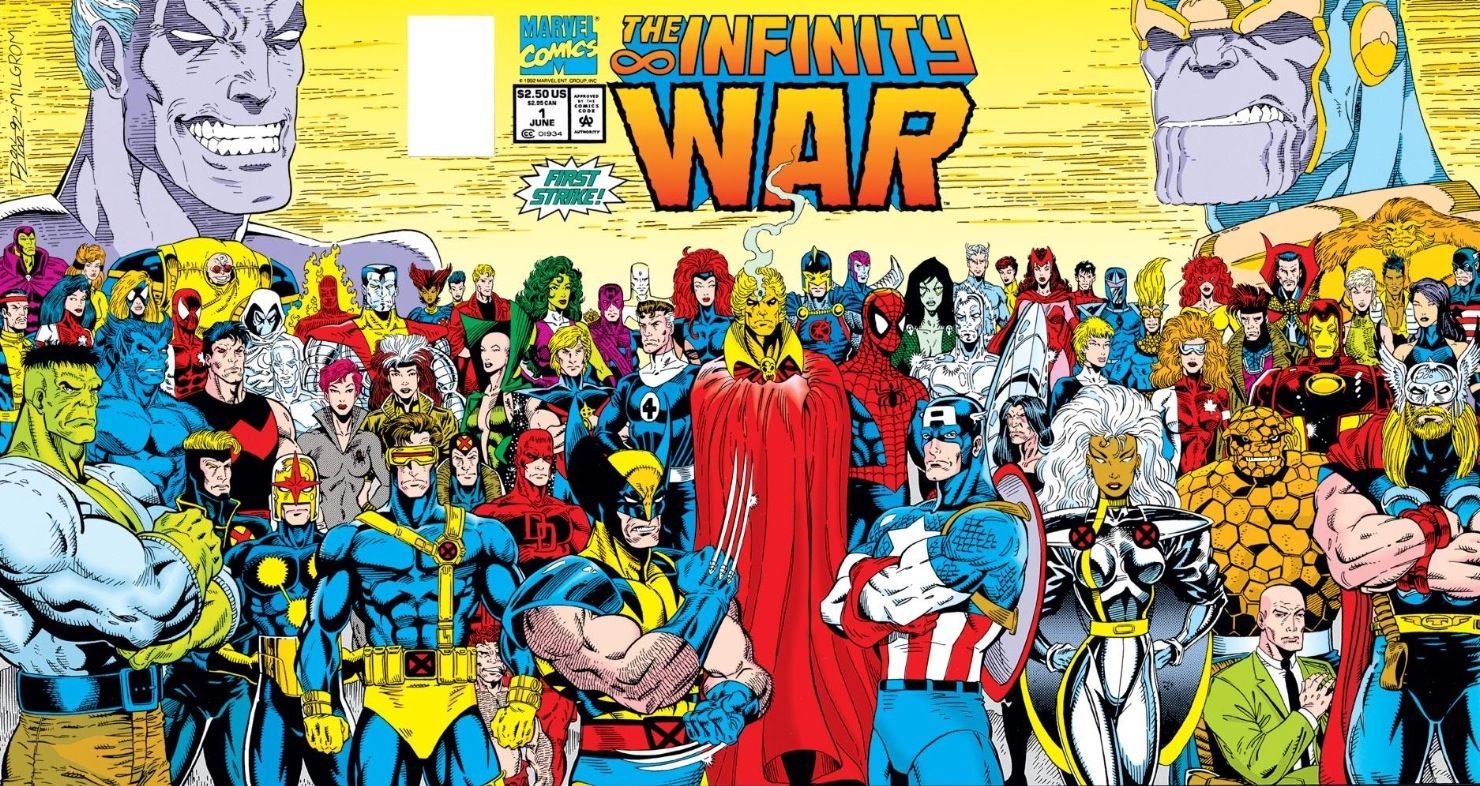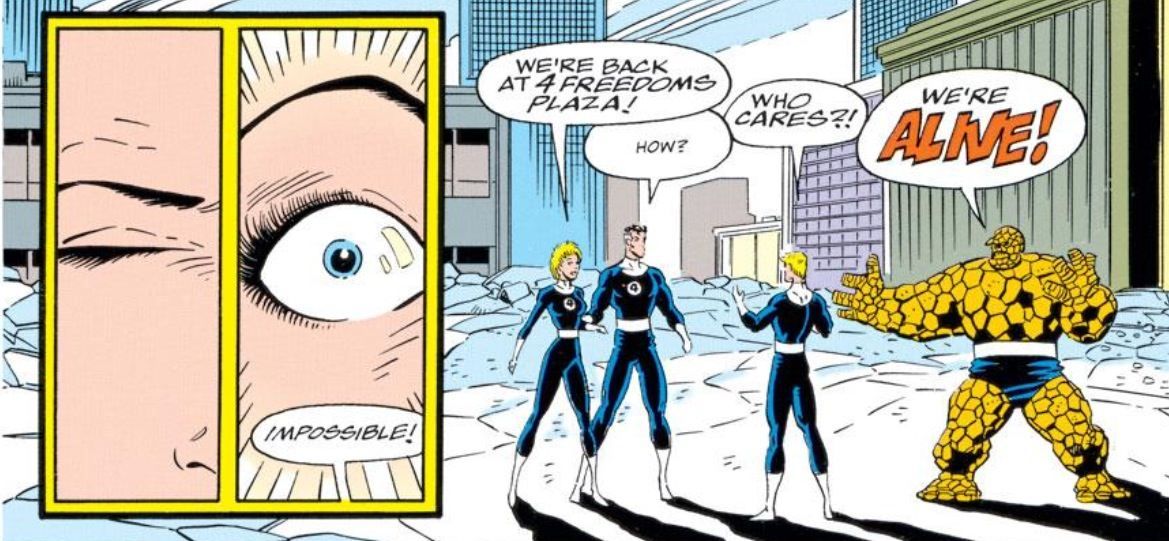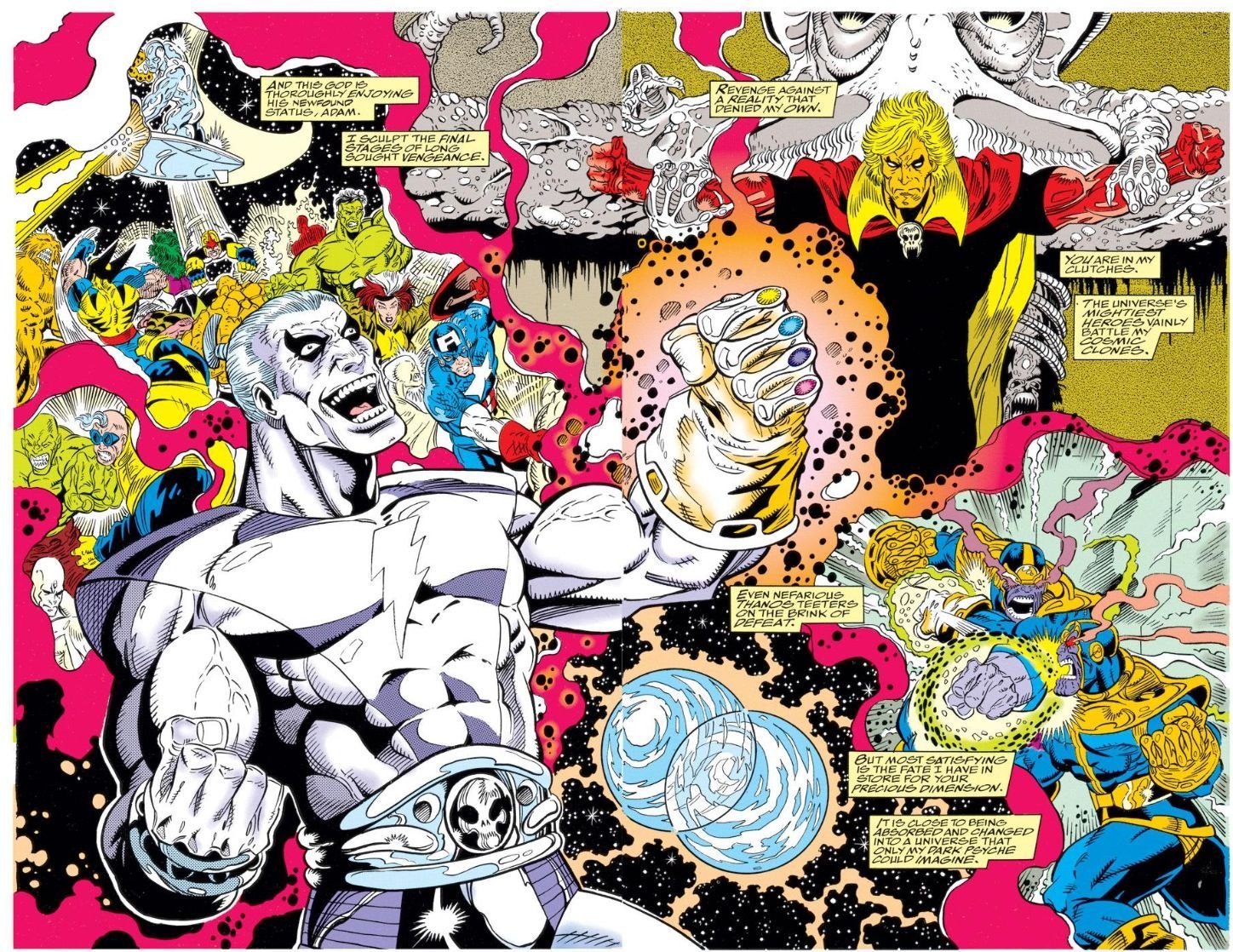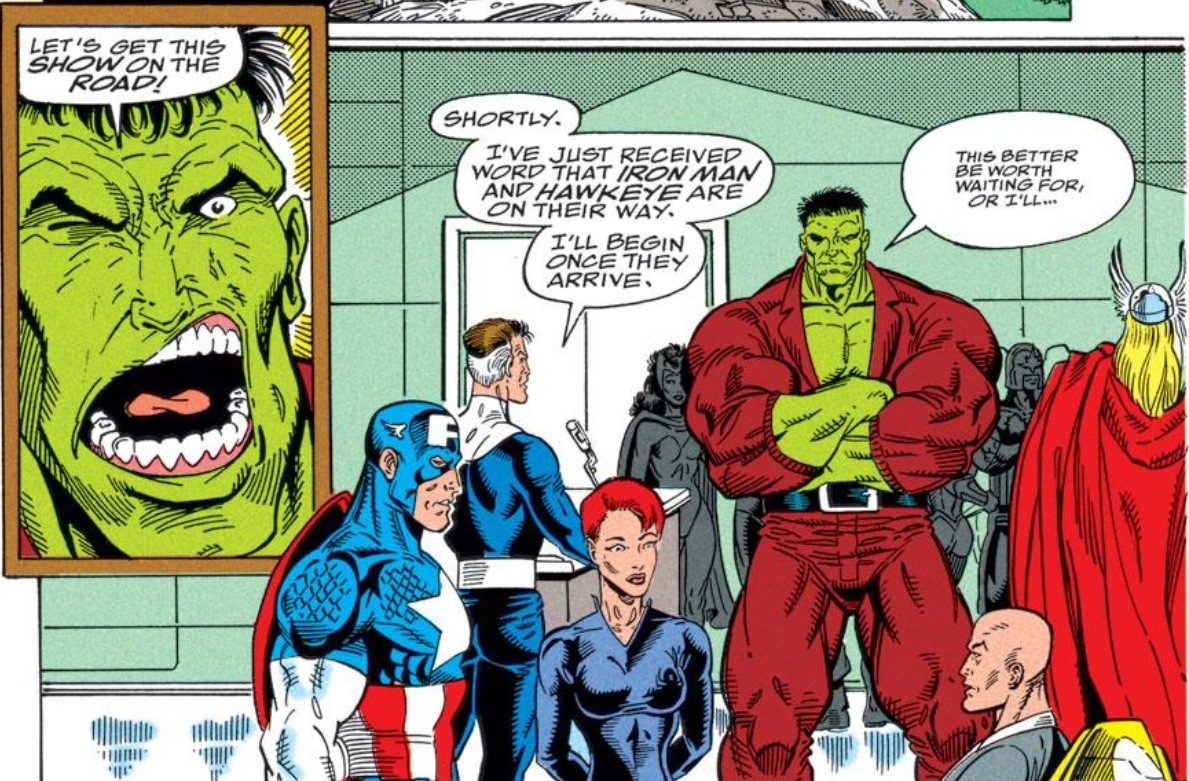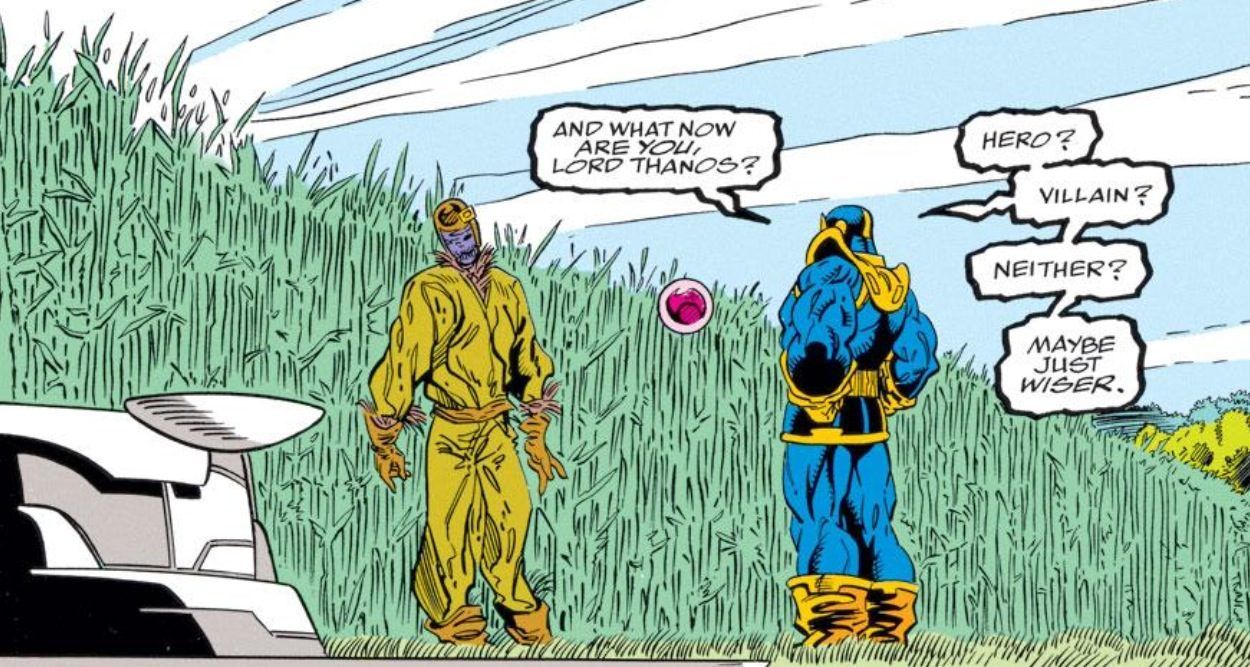In this column, Mark Ginocchio (from Chasing Amazing) takes a look at the gimmick covers from the 1990s and gives his take on whether the comic in question was just a gimmick or whether the comic within the gimmick cover was good. Hence "Gimmick or Good?" Here is an archive of all the comics featured so far. We continue with 1992's gatefolded covers of Infinity War #1-6...
Infinity War #1-6 (published June-November 1992) – script by Jim Starlin, pencils by Ron Lim, inks by Al Milgrom
The next installment of Gimmick or Good’s gatefold cover month focuses on 1992’s Infinity War mini-series, a sequel to the successful Infinity Gauntlet cosmic soap opera from a year earlier. Starlin is back on writing duty and Lim takes the reigns on pencils for the entire run (unlike in Infinity Gauntlet where he took over for George Perez for the final two issues). As a bit of a showpiece for Lim, each of the mini’s six issues featured gatefold covers that expanded to show larger battle scenes.
But what about inside the comics?
Infinity War has a lot in common with its predecessor. Both series feature a broad spectrum of Marvel superheroes, villains and cosmic entities (War even follows a larger cast since half of the Marvel universe wasn’t wiped out in the very beginning like in Gauntlet) fighting for the preservation/destruction of the entire universe. But whereas Gauntlet is a (mostly) highly regarded series, the sequel, as is often the case, just can’t hold a candle to the original.
Infinity War’s biggest issue is the series’ featured antagonist. I was able to tolerate Gauntlet’s sometimes overstuffed melodrama because the central character was the complex (and entertaining)Thanos. For War, Starlin dusts the mothballs off Magus, Adam Warlock’s future “dark self” who was last seen in the late 1970s. Magus, and Warlock for that matter (who probably played too large of a role for my liking in Gauntlet) simply lack Thanos’ dynamism. Thanos is a larger than life adversary in Gauntlet and a joy to read about – someone who gains omnipotence and still restrains from wielding it because of his ego and insecurities. Magus comes across as a cliched “wants to take over the world” villain in War. Even when he inevitably gains control of the gauntlet, the threat and despair never approach Infinity Gauntlet levels. Throughout War, there always seems to be a sense that Marvel’s heroes will succeed, even if it comes in the form of yet another deus ex machina from Starlin.
Meanwhile, Warlock is such a milquetoast personality, I can not fathom why Marvel was okay with Starlin making him the central hero again. After reading Starlin’s original Warlock run from the 70s for the first time a few months ago, even then I got the sense that the writer was starting to lose interest in his character, to the point that he seemed to be going out of his way to portray Warlock as insufferably pious. Starlin’s original Magus-arc was fantastic, but the series literally jumps the (space) shark towards the end, and by that point Warlock had seemingly run his course until all of these Infinity series years later.
In War, Starlin returns to the pious-well with Warlock, even going as far as to hang him on a cross as Magus sits there in full Bond-villain mode, announcing his evil intentions to the world.
The entire series just lacks any of the overall charm that its predecessor had in spades – no inspirational speeches from Captain America or unexpected twists in the story, just an uninteresting villain and Quasar getting gun shy while holding the Ultimate Nullifier. At one point in the series’ second issue arrogant Hulk wants to get the “show on the road”...
and I can’t disagree with him. Let’s just get to the conflict here instead of standing around and talking about it.
I’m even conflicted about one of the series’ bright spots – Thanos. After nearly successfully becoming a God and wiping out half of all existence in Gauntlet, Thanos apparently thinks the threat from Magus is so dire (it’s important to note how Thanos was responsible for his death the first time around in the 70s) he’s willing to align himself with Marvel’s heroes. By the end of the series, Thanos is questioning if he’s a “hero,” “villain” or “wiser,” something I can’t imagine a self-desribed nihilist openly pontificating or caring about.
This story of course came at a period where Marvel was intent on turning some of its more popular villains into anti-heroes of sorts (see also Venom).
In the midst of all this, Starlin introduces a tertiary sub-plot involving Doctor Doom and Kang (!). While it’s fun to see Kang make an appearance, it was all just a telegraphed set-up for one of them to turn on the other (in this case Doom turns on Kang) and adds very little to the overall advancement of the story.
The only area where War improves on its predecessor is in the consistency of the art. Don’t get me wrong, I think Perez is superior to Lim, but Gauntlet’s abrupt changeover of artists at issue #5 is a bit of a black mark on the series, while having Lim on board for all six issues of War keeps the tone and look-and-feel of the story in check.
Overall, while Gauntlet had its fair share of flaws, it’s still a mostly enjoyable read and an important piece of Marvel history that seems destined to gain more importance as more of Marvel’s “Phase Two” movies are released. While not an outright “bad” read, War is certainly an unmemorable one, making it a blatant cash grab in an era that was chock full of them. I have actually not read War’s sequel, Infinity Crusade, but I have to imagine the series doesn’t get better from here. Considering Crusade’s first issue has a gold “holofoil” cover, I guess it’s only a matter of time before you hear my thoughts on that one.
Verdict: Gimmick

